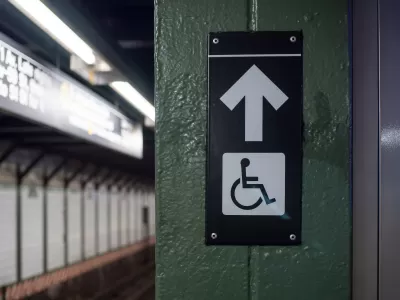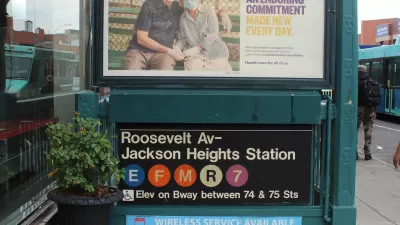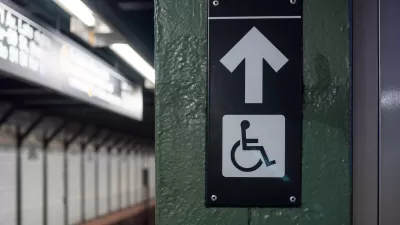Under a new zoning law, New York City developers can receive density bonuses for building elevators and other accessibility upgrades for the city’s subway system.

A New York City zoning amendment allows developers to build at higher density in exchange for including accessibility projects in their plan. As Jacob Kaye reports in the Queens Eagle, a new elevator planned for the Queensboro Plaza subway station will mark the first time the law has been used outside of Manhattan since its passage last year.
The amendment, titled Zoning for Accessibility, takes advantage of new development projects near subway stations to improve accessibility to the city’s subway system. “The accessibility project, which is being constructed on the northern side of Queens Plaza, is part of Grubb Properties development of 25-01 Queens Plaza North. The 26-story residential tower will include a little over 400 units, 30 percent of which would be deemed affordable.” Without Zoning for Accessibility, the building would only be built with 16 stories.
“As part of the deal, Grubb Properties will install the new elevator for access to the station mezzanine level and replace the current subway entrance. The developer will be responsible for maintenance of the staircase on the north side of the station, as well as elevator improvements.”
On the heels of two lawsuits claiming that the Metropolitan Transportation Authority (MTA) violated the Americans with Disabilities Act (ADA), the agency has pledged to make 95 percent of its stations compliant with the ADA by 2055.
FULL STORY: Queensboro Plaza to get accessibility upgrades

Study: Maui’s Plan to Convert Vacation Rentals to Long-Term Housing Could Cause Nearly $1 Billion Economic Loss
The plan would reduce visitor accommodation by 25,% resulting in 1,900 jobs lost.

North Texas Transit Leaders Tout Benefits of TOD for Growing Region
At a summit focused on transit-oriented development, policymakers discussed how North Texas’ expanded light rail system can serve as a tool for economic growth.

Why Should We Subsidize Public Transportation?
Many public transit agencies face financial stress due to rising costs, declining fare revenue, and declining subsidies. Transit advocates must provide a strong business case for increasing public transit funding.

How to Make US Trains Faster
Changes to boarding platforms and a switch to electric trains could improve U.S. passenger rail service without the added cost of high-speed rail.

Columbia’s Revitalized ‘Loop’ Is a Hub for Local Entrepreneurs
A focus on small businesses is helping a commercial corridor in Columbia, Missouri thrive.

Invasive Insect Threatens Minnesota’s Ash Forests
The Emerald Ash Borer is a rapidly spreading invasive pest threatening Minnesota’s ash trees, and homeowners are encouraged to plant diverse replacement species, avoid moving ash firewood, and monitor for signs of infestation.
Urban Design for Planners 1: Software Tools
This six-course series explores essential urban design concepts using open source software and equips planners with the tools they need to participate fully in the urban design process.
Planning for Universal Design
Learn the tools for implementing Universal Design in planning regulations.
Ascent Environmental
Borough of Carlisle
Institute for Housing and Urban Development Studies (IHS)
City of Grandview
Harvard GSD Executive Education
Toledo-Lucas County Plan Commissions
Salt Lake City
NYU Wagner Graduate School of Public Service





























